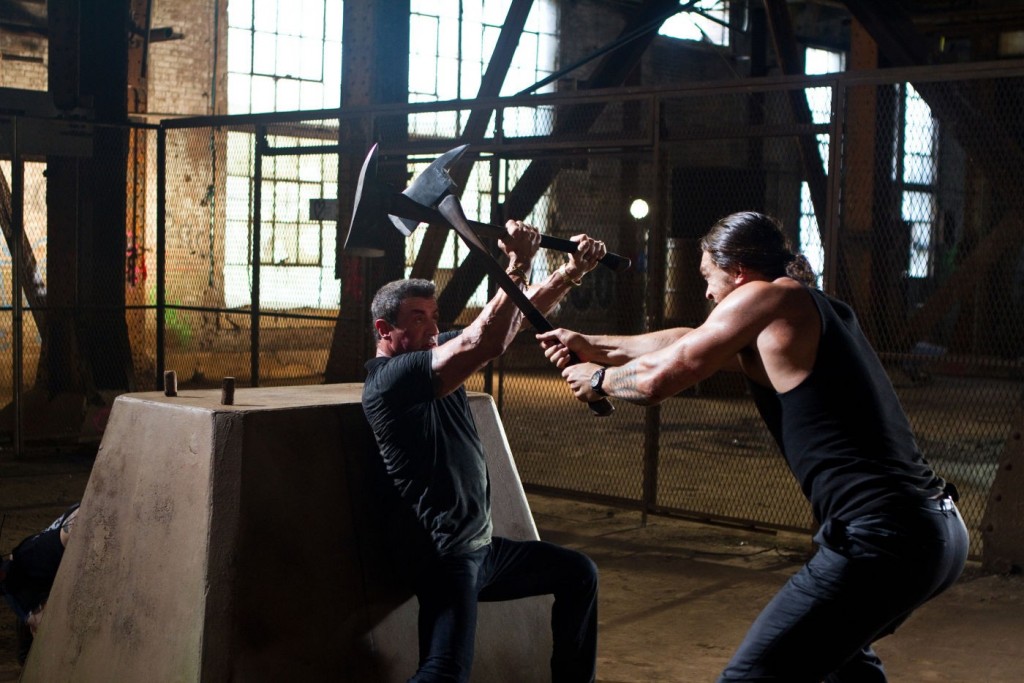Bullet to the Head Review
 Walter Hill has a lot of good will in the bank for making a number of somewhat flawed but wonderfully enjoyable hard boiled pictures over the past forty years. His films may have done little to raise his status as a director to that of a venerated and individual artist, films such as The Warriors or Streets of Fire have hinted at something rather special, but he has never seemed like a director who simply ticks the boxes and churns out pictures. Streets of Fire in particular is a film as extraordinarily interesting as it was financially misjudged, leading to Hill finding it difficult since to make films on such a large canvas.
Walter Hill has a lot of good will in the bank for making a number of somewhat flawed but wonderfully enjoyable hard boiled pictures over the past forty years. His films may have done little to raise his status as a director to that of a venerated and individual artist, films such as The Warriors or Streets of Fire have hinted at something rather special, but he has never seemed like a director who simply ticks the boxes and churns out pictures. Streets of Fire in particular is a film as extraordinarily interesting as it was financially misjudged, leading to Hill finding it difficult since to make films on such a large canvas.
With Bullet to the Head, Hill has found himself in a much safer area of filmmaking and jumps aboard the current bandwagon that appears to have been ignited by The Expendables and a sense of nostalgia for some for the kind of ‘old school’ testosterone fuelled action films that filled the shelves of VHS rental stores in the eighties and nineties. It is notable perhaps that none of the films in this ‘new wave’ have yet managed to live up to the admittedly low bar set by the much-loved American muscle films of the eighties and nineties.
Hill has teamed here with Sylvester Stallone, working from a script by Alessandro Camon, to make a film that seems so stuck in the nostalgia of an older age of action films that if were not for the inclusion of a Blackberry – its novelty within the story is painfully hammered home by some incredibly leaden dialogue – it would hard to guess that the film was made as recently as this decade, or even the last.
The setting of New Orleans should have perhaps provided some interesting flavour to an otherwise bland story of a vengeful contract killer, Jimmy Bobo (Stallone), working with a cop, Taylor Kwon (Sung Kang), to track down those responsible for killing his partner and ripping him off. Sadly nothing is made of the location beyond some vague mentions of crooked redevelopment plans and with a large number of scenes taking place in drab, flatly lit locations – a somewhat interestingly designed Turkish bath aside – it would be very easy for this film to be transposed to any American city with only minor changes to the script.
As Bobo and Kwon drive between these mundane locations the audience are treated to some rather atrocious and often offensive ‘banter’. Clearly taking cues from the tradition of buddy movies of the eighties and nineties the film rests heavily on the growing relationship between these two characters and how it develops through this banter. Thomas Jane was originally slated to play the role later filled by Kang but lost out as supposedly a more “ethnic” actor was wanted. It’s clear why this was the case with so much of the back and forth between the two leads resting on racial banter. Almost all of these ‘jokes’ that hinge on race come from Bobo and are aimed in the direction of Kwon and they are never at all funny and quickly become exhausting.
Furthermore, the film never seems to have a stance on this behaviour and Stallone’s racist character ends the film happily driving off into the sunset in a brand new Ferrari, having learnt nothing at all meaningful. There are suggestions that Bobo is not just a scumbag, he often acts with a flimsy sense of honour, but it’s hard to know why we are supposed to get behind his plight or care about what happens to him.
The introduction of his daughter early on at first seems to suggest some attempt at depth to his character but ultimately she simply provides the damsel in distress necessary, it would seem, to bring the film to its climax. Another tired action trope wheeled out of retirement for one last go around.
There is some respite from the casual racism and tired plotting though, with the final scenes in particular providing some of the strongest sequences in the film. Well choreographed and competently framed and edited action bring the film almost to a close and it’s at this point that Hill finally shows that he still has some of those same strengths that made his earlier films so enjoyable.
The setting for these final action sequences are a building previously used in Will’s Hard Times and the final showdown between Stallone and Keegan, played with as much depth of character as a cinder block by Jason Momoa, features a fight using axes that is very reminiscent of the final fight using large hammers in Streets of Fire. Unfortunately these retreads of earlier work only further highlight how little here is new and how much it seems like a poor imitation.
Seeing Hill directing an action film and being back on the big screen should be cause for celebration but Bullet to the Head comes up short in so many areas that it would unfortunately not look out of place sitting alongside the recent output of Steven Seagal on a supermarket bargain DVD shelf.